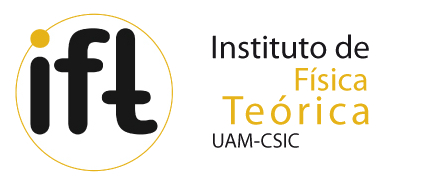School on Cosmology tools
Program
Preliminary Schedule:
|
|
Tuesday |
Wednesday |
Thursday |
Friday |
Saturday |
|
9:00 to 11:00 |
Blue room:
CMB physics (60 min)
(60 min) |
Blue room:
(60 min) Grey room:
(60 min) |
Grey room:
Exercise 5 (cont.) |
Grey room:
Exercise 7 (2h) |
Trip to Segovia from 9h to 17h |
|
11:00 to 11:30 |
coffee break |
coffee break |
coffee break |
coffee break |
II |
|
11:30 to 13:00 |
Grey room:
Exercise 1 (60 min) (30 min) |
Grey room:
CosmoMC 1 (60 min) Grey room:
Exercise 4 (30 min) |
Blue room:
Recombination (60 min) Recomb. Codes (30 min) |
Grey room:
Exercise 7 (cont.) (30 min) |
II |
|
15:00 to 16:30 |
Blue room:
Defying the Laws of Physics in/with HPC (30 min) Grey room:
(60 min)
|
Brian Schmidt (Nobel laureate) talk. (15:00 - Dept. of Physics.) |
Grey room:
Exercise 6 (45 min)
Blue room: CAMB 2 (60 m)
(coffee break might be delayed a bit...) |
Grey room:
|
II |
|
16:30 to 17:00 |
coffee break |
coffee break |
coffee break |
coffee break |
End of the trip to Segovia |
|
17:00 to 18:00 |
Grey room:
Exercise 2 |
Grey room:
Plotting results with Mathematica and Python
(30 min) Exercise 5 |
Blue room:
(60 min) |
Grey room:
Q & A |
|
|
|
|
(This day we can finish later) |
20:30 School’s Dinner |
NOTE 1: Installation instructions for the programs Healpix, CAMB and cfitsio can be found here. Details for the rest will be given during the courses.
NOTE 2: To get the slides of the lectures (pdf files) click on the name of the talk on the schedule shown above. Some extra material (code samples, examples, solutions to the exercises etc) can be found here, while videos of two of the lectures can be found here: CMB Physics and Statistics.
NOTE 3: A report on the activities of the school can be found here.
Tuesday morning:
CMB Physics: Lecture on the basics of CMB anisotropies (60 min). (J. Chluba)
Healpix: Demonstration of the code. Simulate CMB maps from the anisotropies angular power spectrum (C_l’s). Compute the C_l’s from a given map. Apply masks. Convolve with beams - Window function.... etc. (30 min) (J. A. Rubiño)
Tuesday afternoon:
Exercise 1: Exercises on the use of Healpix. Two advanced exercises (how aberration works+polarization modes) proposed for Healpix.
Taming the HYDRA: What is a parallelized code? Details about MPI and OpenMP. How to submit jobs to the queue, specifying the resources at Hydra cluster. (30 min) (A. Díaz-Gil)
Defying the Laws of Physics in/with HPC: Information on High Perfomance Computing by our sponsor. (30 min) (R. Griman)
Statistics: Lecture on basic statistics (best-fits, error estimates, confidence limits, contours). Exploration of the parameter space. What is a Monte Carlo Markov Chain? Sampling methods to produce a chain. (60 min) (L. Verde)
Exercise 2: Write a general code to produce a vanilla Metropolis Markov chain (independently of CosmoMC). Simple example of MCMC + MC integral of 5D Gaussian. (1 hour)
Wednesday morning:
CAMB 1: Standard version of the code. Which equations does it solve? Instructions on how to run it and understand the input parameter file (params.ini). Get an idea of what is coded in each of the source .f90 files. Explanation of the exercises (1 hour). (G. B. Zhao)
Exercise 3: Exercises to understand the output files of CAMB. Plot the anisotropy power spectrum and the linear power spectrum P(k). These exercises will be done locally on the student’s laptops.
CosmoMC 1: Standard version of the code. What does it do? How to use it, understanding the input parameter file. Get an idea of what is coded in each of the source .f90 files. Adding parameters. (J. A. Rubiño)
Exercise 4: Simple exercises to learn how to use the code, and verify it runs properly. (30 min)
Wednesday afternoon:
Plotting cosmological results: How to use python and Mathematica to produce plots (1D likelihoods and 2D confidence contours). (Claudia (Python), Savvas (Mathematica))
Exercise 5: Exercises aiming to fix concepts on the use of CosmoMC. We will form groups of 5 students and assign each group a different exercise. Each exercise will be an example of a run with different data sets or different parameter sets. During this session, the students can submit the project chains to the cluster.
Thursday morning:
Exercise 5 (cont.): In the first part of the morning, the students will check if the chains have converged properly, and analyse the results, make the required plots etc.
Recombination: Lecture on recombination physics. (60 min) (J. Chluba)
Codes: Review on recfast and cosmoRec. How do they compare and what are their main differences? DM annihilation example (30 min) (J. Chluba)
Thursday afternoon:
Exercise 6: Exercises on the use of these codes, their options and output (recfast and cosmoRec). Variation of alpha more advanced, add decaying particles, connection to CAMB, CosmoMC.
CAMB 2: Modifications to CAMB, to include more general DE models. (60 min) (W. Fang)
CAMB 3: Modifications to CAMB, to include modified gravity. Mainly MGCAMB, Geff (60 min) (G.B. Zhao)
Friday morning:
Exercise 7: Instructions on how to include these new modifications to CAMB and to CosmoMC.
Extra Probes: Instructions on how to add a new dataset/likelihood (not included in the default CosmoMC package). (30 min) (Albert / C.H. Chuang)
Friday afternoon:
Project presentations: Student’s projects presentations. Discussion of the issues and problems they may have encountered during the exercises.
Q & A: Section in which to discuss any questions that may have arisen during the School.
Saturday:
Social event: trip visit from 9h to 17h
© 2012-2013 Institute for Theoretical Physics UAM - CSIC










